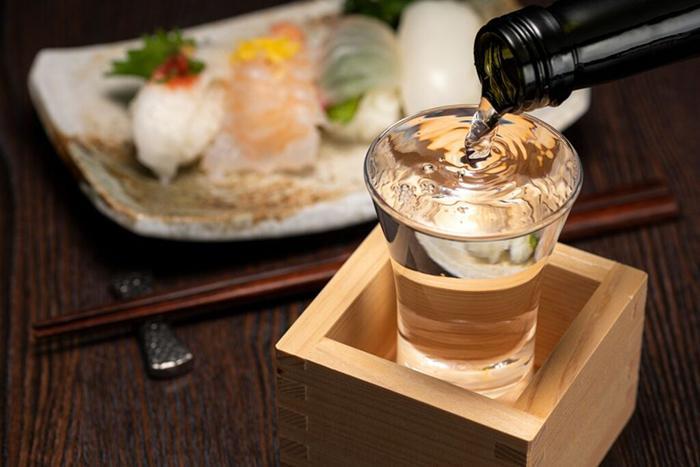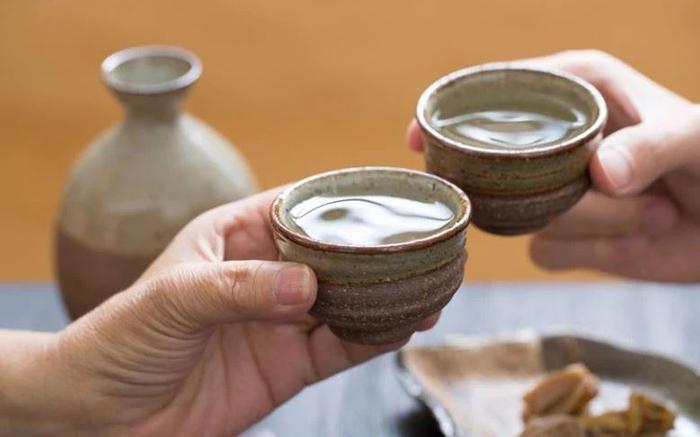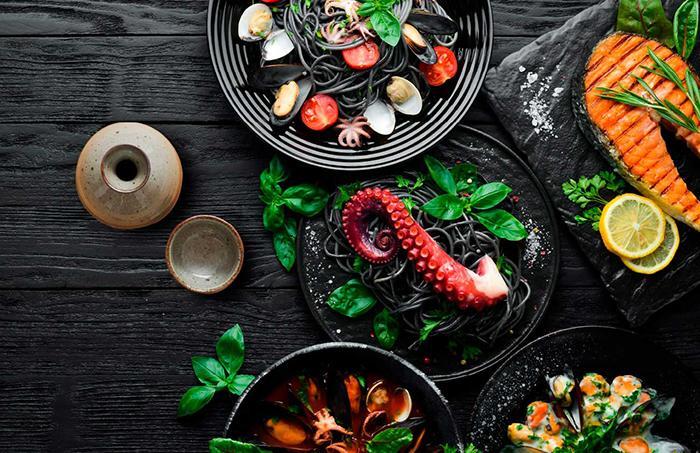Have you ever been intrigued by sake, but unsure about the proper way to indulge in this traditional Japanese drink?
This blog is your valuable guide on how to appreciate this national delight of Japan with an understanding of its etiquette and pairing options along with choosing the right bottle for you.
You Are Watching: How To Drink Sake Updated 12/2025
Ready to become a competent sake connoisseur? Let’s dive in!
The Proper Way to Drink Sake

Pronounce Sake the Right Way
Savoring the full essence of sake starts from pronouncing its name correctly. Often, in Western cultures, it’s mistakenly pronounced as “sah-kee”, when in actuality, it should be said as “sah-kay”.
This Japanese grain alcohol has been a long-standing staple of Japan’s cultural and gastronomic heritage.
Crafted with immense precision and patience through brewing rather than distilling, each sip is an exploration into centuries-old traditions.
Pronouncing it right sets the mood for your immersion into this rich world that combines craftsmanship with history and culture.
So remember next time you’re ordering or discussing this traditional drink in Japan: It’s ‘sah-kay’ not ‘sake’.
With correct pronunciation locked down, you’re one step closer to fully appreciating every nuance of this Japanese treasure.
Don’t Drink Sake Like a Shot
When it comes to enjoying sake, one important tip is to avoid drinking it like a shot. Unlike other spirits, sake is meant to be sipped and savored for its complex flavors and aromas.
By taking small sips, you can fully appreciate the delicate nuances that make each sake unique.
Additionally, drinking sake like a shot may result in an unpleasant experience due to its higher alcohol content compared to beer or wine.
It’s best to take your time with each sip and enjoy the smoothness and depth of flavor that sake has to offer.
Knowing Your Sake Names
In the world of sake, knowing your sake names is essential to understanding and appreciating this traditional Japanese drink.
Sake comes in various categories such as Junmai, Ginjo, and Daiginjo, each offering unique flavors and characteristics.
For instance, Junmai sake is made only from rice, water, yeast, and koji without any added alcohol or sugar.
On the other hand, Ginjo sake undergoes a longer fermentation process resulting in a more fragrant and refined taste.
Daiginjo sake is considered the pinnacle of quality with its delicate aromatics and smooth finish. By familiarizing yourself with these different types of sake names, you can confidently navigate the world of this beloved Japanese beverage.
Trying It Hot or Cold
Sake can be enjoyed in different ways, depending on your personal preference and the occasion. One of the choices you’ll have is deciding whether to drink it hot or cold.
Unlike wine, sake can be served at a range of temperatures, each offering a unique flavor experience.
When heated, sake becomes more aromatic and full-bodied, with flavors that are reminiscent of toasted nuts and caramel.
Read More : What Is Angostura Bitters Updated 12/2025
On the other hand, when chilled, sake tends to be crisper and cleaner tasting, allowing its delicate flavors to shine through.
Experimenting with both options will help you discover your preferred way of enjoying this traditional Japanese rice wine. Cheers!
Drinking Sake with Appetizers
Sake is a versatile beverage that pairs well with a variety of appetizers. Whether you’re enjoying some sushi, tempura, or edamame, sake can enhance the flavors and elevate your dining experience.
Sake’s smooth and delicate flavor profile complements the richness of fried foods like tempura perfectly, while its subtle aromatics can bring out the umami notes in dishes like edamame.
The next time you indulge in some Japanese cuisine, consider pairing it with a glass of chilled or room temperature sake to truly savor the flavors.
Sake Etiquette

Using Both Hands When Pouring or Receiving Sake
Using both hands when pouring or receiving sake is an important gesture in Japanese culture. It shows respect and proper etiquette when handling this traditional drink.
Here’s why it matters:
- Sake is considered a special beverage in Japan, and by using both hands when pouring or receiving it, you are showing reverence for the drink and the person you are serving or receiving from.
- Pouring sake with both hands demonstrates sincerity and care towards the person you are sharing it with. It signifies a genuine desire to provide them with a satisfying experience.
- When receiving sake, using both hands shows appreciation for the effort put into serving it to you. It acknowledges the time and skill involved in preparing and presenting the drink.
- This practice also reflects the mindfulness and attention to detail that is valued in Japanese customs. By using both hands, you demonstrate your awareness of the significance of the act and your willingness to adhere to cultural norms.
- Using both hands when pouring or receiving sake creates a harmonious atmosphere during social gatherings. It contributes to a sense of unity and camaraderie among those partaking in the shared experience of enjoying this traditional beverage.
Offering to Refill Someone’s Cup
One of the important aspects of sake etiquette is offering to refill someone’s cup. In Japanese culture, it is considered polite and respectful to offer to pour more sake for your companions.
When drinking sake with others, keep an eye on their cups and offer to refill them when they are getting low. This gesture shows camaraderie and hospitality, creating a warm and friendly atmosphere.
Remember that it is customary not to fill the cup completely, as leaving a small portion empty allows for easy handling without spilling.
By observing this simple etiquette, you contribute to the enjoyment of everyone in the group as you share the delightful experience of drinking sake together.
Not Filling the Cup Completely
Proper sake etiquette involves not filling the cup completely. When enjoying sake, it is customary to leave a small portion of the cup unfilled. This allows for the aroma and flavors of the sake to fully develop, enhancing your drinking experience.
By leaving some space in the cup, you can appreciate the delicate nuances and aromatics that are characteristic of this traditional Japanese rice wine.
So next time you pour yourself or someone else a cup of sake, remember to exercise restraint and embrace this elegant custom.
Not Drinking Sake Straight From the Bottle
Drinking sake straight from the bottle is a big no-no when it comes to sake etiquette. Unlike some other alcoholic beverages, sake should always be poured into a cup or glass before drinking.
This allows you to fully appreciate its aroma and flavor profiles. Additionally, pouring sake into a cup shows respect for the beverage and signifies that you are ready to savor its distinct qualities.
Sake is often enjoyed in small cups called sakazuki or traditional cedar boxes known as masu. When pouring or receiving sake, it’s customary to use both hands as a sign of respect.
It’s also important not to fill the cup completely, leaving a little room at the top as a symbol of hospitality.
Not Mixing Different Sake
Mixing different types of sake is not recommended as it can affect the flavor and experience of each individual sake.
Sake has a diverse range of flavors, aromas, and characteristics that make each type unique.
Mixing different sakes together can dilute these distinctive qualities and create a less enjoyable drinking experience.
Read More : What Does Vsop Mean Updated 12/2025
It is best to appreciate the nuances of each sake by sipping them separately and allowing their flavors to shine on their own.
So next time you’re enjoying a glass of sake, resist the temptation to mix different varieties together and instead savor each one individually for a truly authentic taste of this traditional Japanese beverage.
How to Choose the Right Sake

Considering Appearance, Aroma, and Taste
When choosing a sake, it’s important to consider its appearance, aroma, and taste.
Here are some key factors to keep in mind:
- Appearance: Look for a clear and transparent sake. Avoid any cloudiness or sediment in the bottle, as this may indicate poor quality or improper filtration.
- Aroma: Take a moment to sniff the sake and inhale its aroma. Notice if it has a pleasant and enticing fragrance. A good sake will have subtle floral or fruity notes that add complexity to the overall drinking experience.
- Taste: Sip the sake and pay attention to its flavor profile. Is it well-balanced, with a harmonious blend of sweetness, acidity, and umami? Does it have a smooth and clean finish? Consider your personal preferences when it comes to sweetness or dryness levels.
- Temperature: Remember that different types of sake are meant to be served at specific temperatures. Some sakes are best enjoyed chilled to enhance their delicate flavors, while others can be served warm for a richer and fuller-bodied taste.
- Pairing: Keep in mind the food you plan to pair with the sake. Some sakes complement seafood dishes, while others go well with grilled meats or vegetarian fare. Consider the flavor profiles of both the food and the sake when making your selection.
Serving at the Correct Temperature
To fully appreciate the flavors and nuances of sake, it’s important to serve it at the correct temperature. The temperature at which sake is enjoyed can significantly impact its taste and aroma.
While some people prefer to drink sake chilled, others enjoy it warm or at room temperature.
Chilling sake brings out its crispness and enhances its delicate aromatics. It also helps to balance out any bitterness in the flavor profile.
On the other hand, warming sake can bring out its rich and earthy qualities, making it a comforting beverage on colder days.
When serving sake chilled, simply store it in the refrigerator for a few hours before enjoying. For those who prefer a warmer experience, heat your sake gently by placing the bottle in warm water or using a specialized warming device.
It’s worth noting that not all types of sake should be served at the same temperature. Some sakes are better suited for chilling, while others are best savored when warmed up slightly.
To ensure you’re getting the most out of your chosen variety, refer to the label or ask an expert for recommendations.
Reading the Sake Bottle’s Information
When choosing the right sake, it’s important to read the information provided on the bottle. This can help you understand more about the sake and make an informed decision.
Look for details such as the type of rice used, whether it’s Junmai or Ginjo, and any specific brewing methods or traditions.
The label may also indicate the alcohol content and recommended serving temperature. By taking the time to read and understand this information, you can enhance your appreciation of sake and select a variety that suits your taste preferences.
Sake Food Pairings

Pairing sake with the right food can enhance the flavors of both, whether it’s pairing a light and fruity Junmai Ginjo with sushi or a rich and full-bodied Junmai with grilled meats.
Exploring the Best Food to Pair with Sake
When it comes to enjoying sake, pairing it with the right food can elevate your drinking experience. Here are some of the best foods to pair with sake:
- Sushi and Sashimi: The clean and subtle flavors of sake complement the delicate taste of fresh sushi and sashimi. The smoothness of sake helps enhance the natural flavors of the fish without overpowering them.
- Tempura: The light and crispy texture of tempura pairs well with the crisp and refreshing qualities of sake. It balances out the richness of the batter while bringing out the flavors of the delicately fried ingredients.
- Yakitori: Whether you are enjoying grilled chicken skewers or other grilled meats, sake is a wonderful accompaniment. Its subtle sweetness and clean finish complement the smoky and savory flavors.
- Cheese: Although not traditionally paired together, cheese can create an interesting contrast when paired with sake. Opt for soft and mild cheeses like brie or camembert to avoid overpowering the delicate flavors of sake.
- Seafood: From grilled fish to seafood salads, sake has a natural affinity for seafood dishes. Its gentle acidity cuts through any oiliness, enhancing the taste of shellfish, scallops, or even rich crab dishes.
- Tofu: Sake’s clean and subtle flavor profile complements tofu’s mild taste perfectly. Whether you enjoy tofu in soups, stir-fries, or simply as a standalone dish, it pairs harmoniously with sake.
- Lightly seasoned vegetables: Sake enhances the flavors of lightly seasoned vegetables such as steamed or sautéed greens, asparagus, mushrooms, or cucumber rolls. It adds a pleasant depth without overwhelming their natural subtleties.
- Miso soup: A warm bowl of miso soup makes a comforting companion to a glass of chilled sake. The umami-rich broth pairs well with both dry and fruity sake varieties, creating a satisfying harmony of flavors.
Tips for Pairing Sake with Different Dishes
Here are some tips to help you make the most out of your sake and food combinations:
- Match intensity: Consider the flavor profile and intensity of both the sake and the dish. Light, delicate sakes like Ginjo pair well with lighter dishes such as seafood or salads, while fuller-bodied sakes like Junmai are better suited for heartier dishes like grilled meats or stews.
- Complement flavors: Look for sake flavors that complement the flavors in your dish. For example, a fruity Junmai Daiginjo can enhance the sweetness of a tropical fruit dessert, while a dry Honjozo can balance the richness of fatty cuts of meat.
- Contrast textures: Pairing sake with contrasting textures in your food can create an interesting sensory experience. Try pairing a sparkling sake with crispy tempura or a creamy nigori sake with spicy tuna rolls.
- Consider cooking methods: Take into account how the dish is prepared when selecting a sake pairing. Grilled or roasted dishes often have smoky or charred flavors that can be complemented by aged or earthy sakes, while lightly steamed or raw dishes may benefit from fresher, more floral sakes.
- Experiment with temperature: Don’t be afraid to try serving your sake at different temperatures.to find the perfect match for your meal. Cold sakes work well with light appetizers and sushi, while warm sakes can bring out richer flavors in grilled or braised dishes.
- Cleanse and refresh: Sake has cleansing properties that can help refresh your palate between bites of rich or oily foods. Take small sips of chilled sake between bites to cleanse your taste buds and prepare them for the next bite.
Conclusion
In conclusion, learning how to drink sake is a journey into the rich cultural traditions of Japan.
By understanding the proper way to pronounce and drink sake, as well as the etiquette involved, you can fully appreciate this beloved Japanese beverage.
Whether you prefer it hot or cold, with appetizers or alone, exploring the world of sake will enhance your drinking experience and open up a whole new realm of flavor possibilities.
Cheers to enjoying sake like a true connoisseur!
Sources: https://chesbrewco.com
Category: Wine










